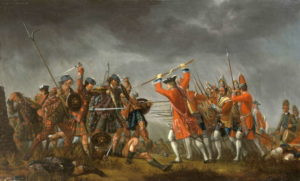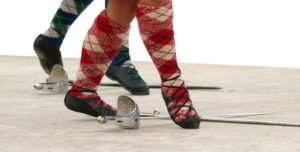Highland Dancing, a captivating and intricate form of Scottish national dance, embodies the spirit of Scotland and its vibrant culture. Often seen at Highland gatherings around the globe, this sophisticated dance tradition has been carried by Scottish emigrants to countries like Australia, Canada, South Africa, New Zealand, and the United States, where competitions are held regularly. While today most participants are female, Highland dancing’s origins are rooted in the martial traditions of Highland warriors, who used these dances to emulate heroic deeds from Scottish folklore.
Historically, Highland Games served as a platform for kings and clan chiefs to assess the prowess of their men. Highland dances were integral to this process, allowing men to showcase their strength, stamina, and agility through disciplined movements.
 Culloden
Culloden
Evidence of these elaborate war-dances dates back centuries. The earliest documented account describes performances accompanied by the “wailing music of bagpipes” at the wedding of Alexander III in Jedburgh in 1285. Later, in 1573, Scottish mercenaries reportedly performed a sword dance for King John III of Sweden at Stockholm Castle. Intriguingly, this performance was rumored to be part of a foiled assassination plot, where swords, necessary for the dance, were intended as weapons.
Royal occasions in Scotland also featured Highland dances. A reception for Anne of Denmark in Edinburgh in 1589 included “Sword dance and Hieland Danses,” and in 1617, a sword dance was performed for James VI. In 1633, further highlighting the dance’s cultural significance, the Incorporation of Skinners and Glovers of Perth performed their sword dance for Charles I on a raft in the River Tay.
The Battle of Culloden in 1746 marked a turning point. The British government, aiming to dismantle the rebellious clan system, implemented repressive measures in the Highlands. The Act of Parliament prohibited wearing kilts and carrying weapons, effectively suppressing Highland culture. By the time the Act was repealed in 1785, enthusiasm for traditional Highland attire and the props needed for sword dances had waned.
Queen Victoria’s appreciation for Scotland sparked a resurgence of Highland culture, revitalizing Highland games and Highland dancing as a central element.
Over time, competitive Highland dancing evolved, streamlining the dances performed to facilitate judging. This standardization, however, led to the loss of many traditional dances that were no longer required for competition. Another significant shift has been in dancer demographics. Initially an exclusively male domain, Highland dancing today is predominantly female, with women making up over 95% of dancers.
In competitive Highland dancing, by 1986, only four core dances were standardized: the Sword Dance (Gille Chaluim), the Seann Triubhas, the Highland Fling, and the Reel of Tulloch. Like many dance forms, Highland dancing continues to evolve, blending ancient traditions with modern influences.
 Sword dancing
Sword dancing
The dances themselves are steeped in legend:
-
The Sword Dance (Gille Chaluim): Legends link this dance to King Malcolm III (Canmore), who supposedly celebrated a victory by dancing over his sword and his enemy’s sword. Another interpretation suggests it was a pre-battle ritual, testing agility – touching a blade was a bad omen. Practically, it may have been a footwork drill for sword fighting.
-
The Seann Triubhas: Meaning “old trousers” in Gaelic, this dance symbolizes Highlander’s resentment of wearing trousers, forced upon them after the 1745 rebellion when kilts were banned. The slow opening movements represent shaking off trousers, while the fast finale celebrates the kilt’s return after the ban was lifted in 1782.
-
The Highland Fling: One legend describes it as a warrior’s victory dance performed over a small shield (targe) with a central spike. Another connects it to a boy imitating a stag on a hillside, with arms mimicking antlers.
-
The Reel of Tulloch: Originating in Tulloch village, legend says villagers waiting for church on a cold morning began stamping and clapping to stay warm, evolving into a lively dance when someone whistled a tune. A darker tale links it to a game played with an enemy’s severed head.
Highland dancing remains a vibrant testament to Scottish history and culture, enjoyed and practiced worldwide.

